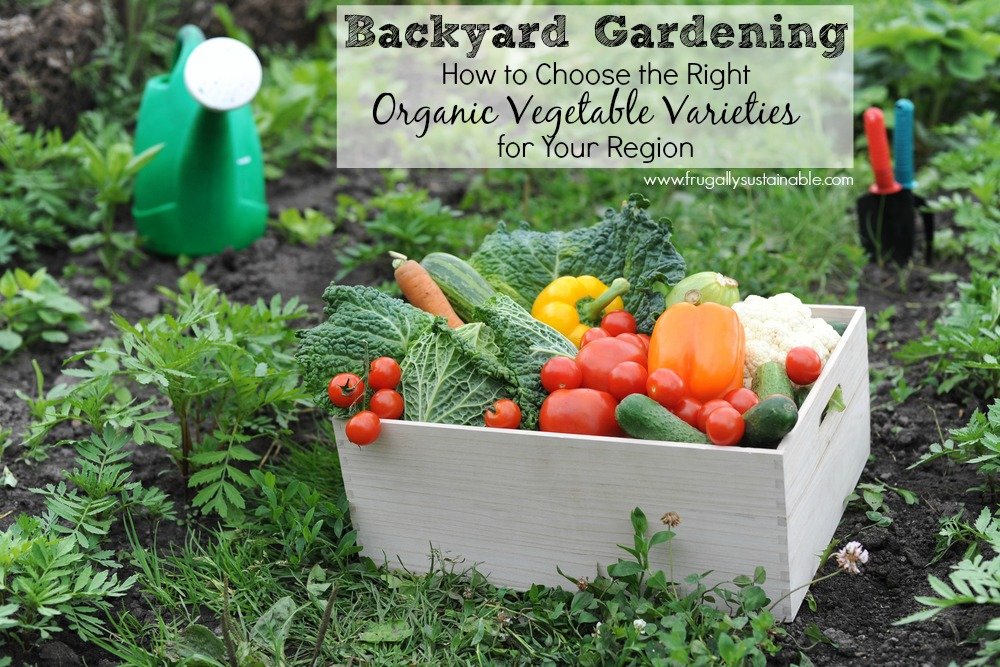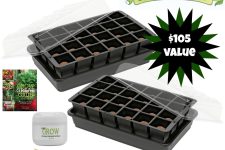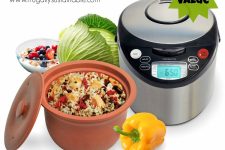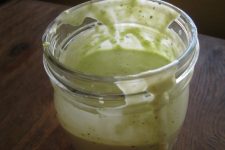
Written & Contributed by Blog Sponsor: High Mowing Organic Seeds
How do I choose the right organic vegetable plants for my region of the country? A question asked by many backyard gardeners and answered today by the organic seed experts of High Mowing Organic Seeds…
There are so many different varieties out there – how do I decide what to plant based on what region of the country I am in?
Growing organic vegetables is a rewarding experience when the correct varieties are chosen for your specific area.
Looking through a seed catalog can be a beautiful, exciting, and overwhelming experience for the beginner gardener. There are so many varieties to choose from! Everything looks so interesting and mouth-watering and you can just imagine yourself harvesting baskets of amazing tomatoes, cucumbers, carrots, beets, corn…
However, before you get carried away, there are a few things you’ll need to know about choosing varieties that will grow successfully in your area:
- what your growing season is,
- what days to maturity are, and
- special weather considerations for your specific area.
I hear about Zones and plants all the time – Don’t I need to know my Zone?
Zones are useful to know when you are dealing with perennials – plants that grow back every year and do not need to be re-seeded.
When dealing with perennials, gardeners use zone maps to learn where permanent plants can grow. Perennial plants must tolerate year-round conditions, such as the lowest and highest temperatures and the amount and distribution of rainfall.
Since the majority of vegetables we sell — at High Mowing Organic Seeds — are annuals (they only grow for one season), we don’t use Zone information too often in our vegetable descriptions.
Instead, we recommend using information called the growing season and days to maturity.
What is my “Growing Season?”
Your growing season refers to the average amount of frost-free days that you have to garden in each year.
To determine this, the first thing you’ll need to do is find out the predicted last frost date in the spring and the predicted first frost date in the fall for your region.
With this information you can establish:
- when you can start planting outdoors,
- when you can no longer plant outdoors, and
- how many frost free dates you have in your growing season.
To discover your growing season and frost dates, you can use this tool:
Dave’s Garden Frost Dates By Zip
For example, using that tool, we discover that here in Wolcott, Vermont, our first frost in the fall can be as early as September 22nd, and our last frost in spring can be around May 22nd. That gives us, on average, a growing season of 124 days.
Using Days to Maturity to Choose Appropriate Varieties
When choosing varieties that will do well in your area, one of the first things to look for is the number listed for “days to maturity”.
Days to maturity refers to the number of days it takes from planting the seeds in the ground to harvest. You want this number to fall somewhere in the middle-to-late middle of your growing season (frost free days).
Many gardeners shorten the “days to maturity” number by starting their seeds indoors, and planting the seedlings outside. In fact, many vegetables must be started this way for them to grow in your area, especially if you have a short growing season.

Remember to check the Planting Informaiton to see if the “days to maturity” are from seeds or transplants.
Be sure to read your catalog and variety descriptions carefully – in many cases the number listed as “days to maturity” are actually in fact “days to maturity from transplants”. Your catalog should make this clear. In our catalogs we include this information in our “Planting Info”, which is located on the left hand side at the beginning of every variety category.
So, for example, if I wanted to grow red field tomatoes, I would go to the tomato section of the catalog, and first check out the Planting Info for tomatoes, located on the left hand side of the page. Here I discover that “Days to Maturity are from transplants.” So now I know that given my short growing season, I should be starting my seeds inside.

For this tomato variety, days to maturity from transplants are 60 days.
I then go check out the different red field tomato varieties. I choose Moskovich because I can see that it has a relatively short number for “days to maturity”, 60 days, which will fit my growing season nicely. That means that 60 days from when I put my transplants into the ground, I can expect to start harvesting tomatoes. The description also states that this is an “early-season” variety – always a good choice when your growing season is short!
(How and when to start your seeds indoors is a whole other issue that we will explain in a future article. For now we are focusing on how to choose an appropriate variety for your area.)
Taking into account weather patterns in different regions
Different regions have different weather patterns.
Northern growers have short seasons. In the Northeast our summers also tend to be wet, so hardy short season varieties are more appropriate. In the Northwest summers tend to be dryer and warmer, so most varieties will do well there.
Southern growers should look for heat tolerant varieties that can stand long days of sun and minimal water.
Variety descriptions can give you great insight to which ones will work best for you. Your seed catalog can be your best source of information.
To help you out, we’ve put together recommendations for our varieties that are:
Gardening does take some time to master, so start out with a few of your favorite crops.
As you get the basics down you can start incorporating new items that may be harder to grow.
The idea is to be successful, so don’t overdue it.
Where can I get more information about growing conditions in my area?
For specific growing information on your particular area, your best choice for advice is always to contact your local Master Gardener program.
The Master Gardener program is staffed by experienced gardeners who can provide you with free information, answers and resources.
If you’re looking for the BEST organic, GMO-free seeds for your vegetable garden this year…choose High Mowing Organic Seeds! I had the most amazing garden of my life using their seeds last summer/fall and will ALWAYS choose High Mowing. I’m honored to recommend such a great company!
Stay tuned for a pretty amazing giveaway from High Mowing Organic Seeds later in the week!!!
DISCLOSURE: In order for me to support my knowledge-sharing/writing/blogging activities, I occasionally may receive monetary compensation for my endorsement, recommendation, testimonial and/or link to any products or services from this article. However, I only recommend products or services I have personally used myself and trust.




 GIVEAWAY! Beeyoutiful Essential Oils & Gift Card (a $212 value)
GIVEAWAY! Beeyoutiful Essential Oils & Gift Card (a $212 value)
Andrea- thanks for this information! This is the main thing that I struggle with in a garden sometimes.
I hear a lot about heirloom varieties what does that mean?
Hi Andrea,
It is really the best idea to use backyard as a vegetable garden if you have enough space as well as right climate zone. Growing vegetables in garden is the best way to increase growth rate and yields.